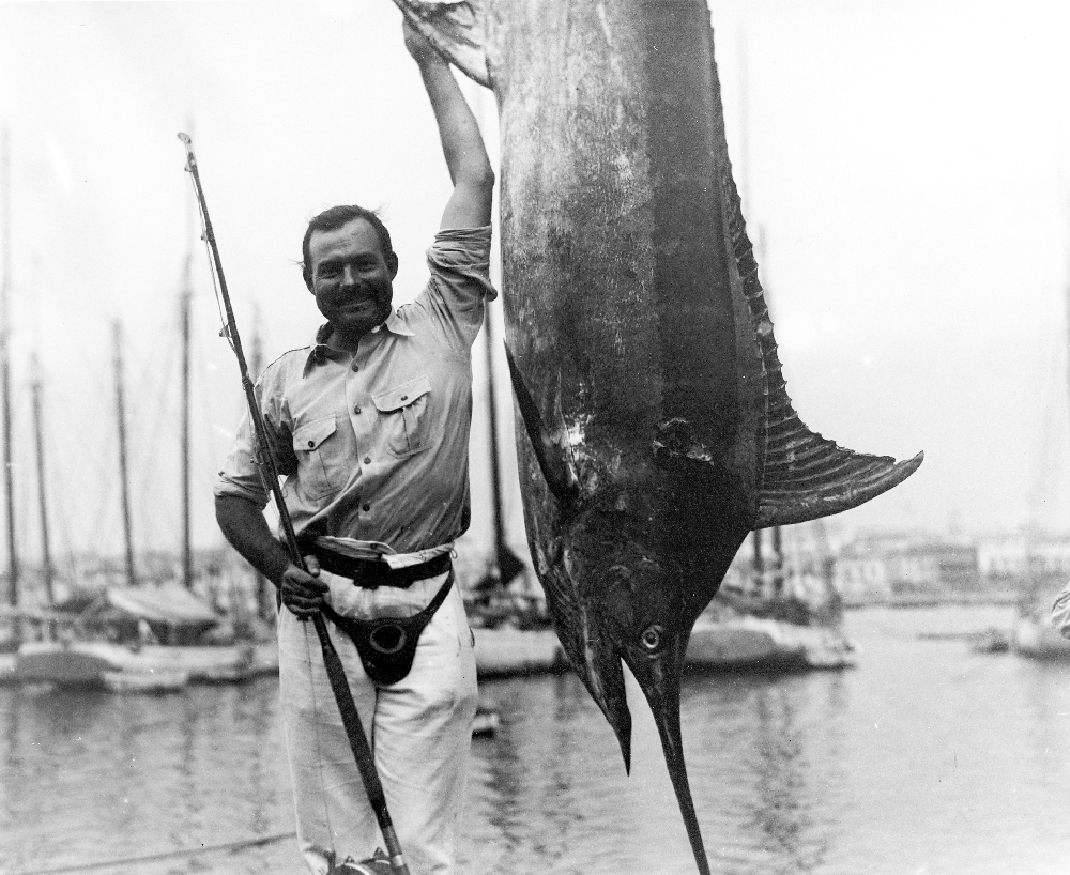5
HIS #2 PENCIL
“It’s funny,” I said. “It’s very funny. And it’s a lot of fun, too, to be in love.”
“Do you think so?” her eyes looked flat again.
“I don’t mean fun that way. In a way it’s an enjoyable feeling.”
“No,” she said, “I think it’s hell on earth.”
—Jake Barnes and Lady Brett in The Sun Also Rises
It’s easy to write like Hemingway. Try it. A lot of famous writers have. Joan Didion told an interviewer that in the seventh grade, “I liked Hemingway. Those sentences just knocked me out. In fact, I taught myself to type by typing out the beginning of Farewell to Arms and a couple of short stories … those rhythms get in your head.” I worked once for a Hollywood studio where my next-office neighbor spent her lunch break typing up whole novels of Hemingway. And before I published anything, I’d sit for hours at my desk typing and retyping “Hills Like White Elephants.”
So technically, you can do it. Short words, brief paragraphs, few or no adverbs. Write standing up like Hemingway (because his leg still hurt from the war wound), using a #2 pencil on onion skin paper. Get up early in the morning, around sunrise, feet bare or in house slippers planted firmly on the skin of a zebra or lion you have shot yourself on African safari. Keep at it with fanatic self-discipline. And don’t drink until you’ve done your four or five hundred words for the day.

Hemingway with a marlin in Cuba
Go ahead, it’s easy. Perhaps it’s a little harder to earn the deep feelings that make Hemingway’s words so electrifying.
Hemingway’s “coolness,” in those terse dry sentences, hides very hot emotions that he’s trying to control by expressing them indirectly, in what he later called, using a pool term, a “three cushion shot.” (“I try to do the thing by the three cushion shot rather than by words or direct statement.”) Take his first novel, The Sun Also Rises, where he transfers his own injury at Fossalta to a war-castrated, expatriate journalist Jake Barnes. Jake is desperately in love with beautiful Lady Brett Ashley, who wants him physically, but there’s nothing they can do about it. In this way Hemingway’s rage about the war is imposed on his fictional war veteran Jake.
Very autobiographical, so far. Except that Hemingway was not impotent. And he confessed he made up things. Another example: his magnificent account of the soldiers’ “retreat from Caporetto” in A Farewell to Arms. On first reading I would have sworn this could not have been written except by a soldier who had been there in the mud and rain. Yet Hemingway conceded that, though he’d been nearby, he was not at Caporetto. He often plays a complicated game, warning us not to read too much of his personal life in his fiction … yet then, particularly in the Nick Adams stories, practically demanding that we do so. “You have the sheet of blank paper, the pencil, and the obligation to invent truer than things can be true,” he said, coyly.
Alas, the more you’re tempted to sniff clues to the “real” Hemingway in the Nick Adams stories or “The Snows of Kilimanjaro” or “The Short Happy Life of Francis Macomber,” the more likely you’ll miss the only important clue: words on the printed page and how you respond to them. His fiction is the truth of his life.
The mature Hemingway had a habit of handing out tips on writing, that is, writing more like him, and you’ll go crazy trying to follow them. Most can be found in Larry Phillips’s useful little book Ernest Hemingway on Writing. Of his insights, after much trial and error, I’ve managed in my own writing only these:
1. “When people talk, listen completely. Most people never listen.” (This is the hardest.)
2. “First drafts of anything is shit.”